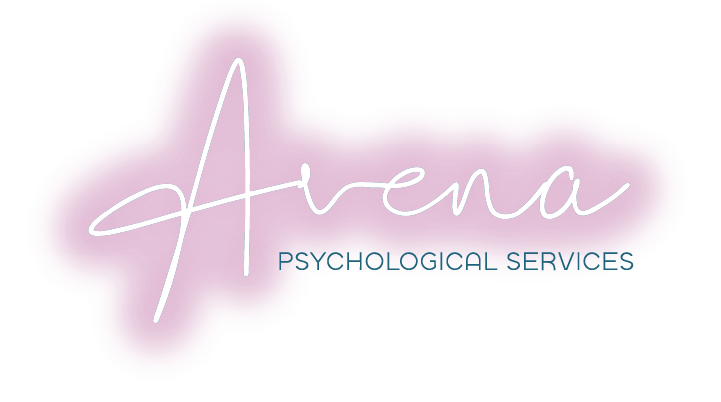You’re lying in bed. You told yourself you’d just check the headlines. A few minutes, max. But suddenly it’s an hour later, your heart is racing, and you’ve read fifteen articles that made your stomach twist into knots.
The war. The economy. Another climate report. Another injustice. Another round of opinions.
You close the app and feel worse than when you opened it.
If this sounds familiar, you’re not alone. And you’re not doing anything wrong. You’re caught in a pattern that’s become so common, there’s a name for it: doomscrolling.
At Avena Psychological Services, we work with many people navigating the mental toll of being constantly plugged in. Whether it’s anxiety, burnout, or that constant hum of dread in your chest, doomscrolling can keep you stuck in survival mode.
Let’s talk about what it is, why it happens, and what you can do when the news becomes too much.
What is an example of doomscrolling?
Here’s what doomscrolling might look like in real life:
You open Instagram after dinner, just to wind down. You see a post about a wildfire. Then you click through to a news site. Then a thread on X (formerly Twitter). Then a Reddit comment section that makes you feel even worse. Before you know it, you’re reading worst-case scenarios, people arguing, misinformation flying—and your brain is spiraling.
You know it’s not helping. But you can’t seem to stop.
That’s doomscrolling—the act of compulsively consuming negative or distressing news online, often for long periods of time, even when it causes emotional harm.
It can happen in bed, on breaks, during work, or when you’re already overwhelmed. And the worst part? It can feel like you’re doing something important—staying informed, being engaged—when really, you’re quietly unraveling inside.
What is doomscrolling slang for?
Doomscrolling is a slang term that exploded during the early days of the pandemic. It refers to the never-ending habit of scrolling through bad news, social media outrage, or anxiety-inducing content without being able to look away.
It’s a mix of two things:
- “Doom,” meaning grim or distressing news, and
- “Scrolling,” the constant swiping or browsing we do on our devices.
But doomscrolling isn’t just a bad habit—it’s often a coping mechanism. When the world feels out of control, our brains search for answers, for patterns, for something that will help us prepare or feel less helpless.
Except the news rarely provides resolution. Just more reasons to worry.
And that loop—of worry, click, worry again—is how we get hooked.
What is ADHD doomscrolling?
If you live with ADHD, doomscrolling can be even harder to break. That’s because ADHD affects how your brain regulates attention, reward, and impulse control—all of which play a big role in how we interact with our screens.
Here’s how ADHD doomscrolling might show up:
- You pick up your phone to check the time, then lose 45 minutes to a news rabbit hole.
- You struggle to stop even when you feel anxious, overstimulated, or tired.
- You crave the dopamine hit of novelty (new headlines, new content) even if it’s distressing.
- You feel paralyzed trying to switch tasks or put the phone down.
People with ADHD often describe doomscrolling as both overstimulating and numbing. It can hijack your attention, drain your energy, and leave you feeling more scattered than grounded.
If this is you, it’s not about willpower. It’s about your nervous system looking for regulation—and ending up in a loop that does the opposite.
Therapy, especially with someone who understands ADHD and screen habits, can help you find strategies that actually work for your brain.
Why is doomscrolling so addictive?
It’s not just you. Doomscrolling taps into very human instincts—and very modern technology.
Here’s why it’s so hard to stop:
- Negativity bias: Our brains are wired to pay more attention to threats than to neutral or positive info. It’s part of how we’ve survived for thousands of years.
- Intermittent rewards: Sometimes, you do find an important update or useful insight. That random “reward” keeps you coming back.
- Social validation: Seeing others react, comment, or share confirms the urgency—and pulls you deeper.
- Information overload: You want to be informed. You want to prepare. But the stream never ends.
And in the background? Algorithms designed to keep you scrolling. Apps that reward outrage. Headlines built for clicks, not nuance.
So yes—doomscrolling feels addictive because it’s built that way. But you’re not powerless. You can learn to step back without disconnecting completely.
So how do I stop doomscrolling when the world is still on fire?
We get it. You don’t want to tune out. You want to care.
But you don’t have to carry the weight of the world in your hands every hour of the day. You deserve rest. Regulation. Perspective.
Here are a few ways to disrupt the doomscrolling cycle:
- Set a time limit.
Use a timer or screen time setting. Even a 15-minute boundary is better than none. - Name the feeling.
Are you anxious? Bored? Lonely? Naming your emotion can break the autopilot loop. - Change the input.
Follow accounts that offer solutions, calm, or context—not just crisis. - Move your body.
If you’re stuck in a spiral, stand up. Walk. Stretch. Get out of your head and into the moment. - Schedule news check-ins.
Pick 1–2 times per day to catch up, then log off. You’ll stay informed and sane. - Ask: Is this helping me help others?
Sometimes doomscrolling gives us the illusion of activism. But true impact often comes from rest, clarity, and intentional action.
When to reach out for support
If doomscrolling is affecting your sleep, relationships, focus, or mental health—it’s okay to ask for help.
At Avena Psychological Services, we support people who are trying to stay grounded in an unsteady world. Whether you’re navigating anxiety, burnout, ADHD, or just trying to stop spiraling, you don’t have to figure it out alone.
Therapy gives you a space to explore why the headlines hit so hard—and how to respond in a way that feels less like collapse and more like choice.
Final thoughts: You can stay informed without being consumed
We live in a world where the bad news finds us faster than ever. But you weren’t designed to absorb it all at once. You’re allowed to log off. To rest. To protect your peace without abandoning your values.
Doomscrolling may feel like control—but often, it’s just another way we lose ourselves.
You deserve more than constant anxiety. You deserve context. Calm. Connection. And if you’re not sure how to get there—we’re here.
Avena Psychological Services offers compassionate, nonjudgmental support for people who care deeply—and need a break. Let’s build a new habit together: one that centers on your well-being, not your overwhelm.
Because even when the world feels like too much, you don’t have to carry it all alone.
Meet The Therapists You'll Work With & Get Scheduled Today!

Michael Cruz, LMHC
Licensed Mental Health
Counselor – NY

Luisa Enriquez, LSW
Licensed Social Worker – NJ

Katalin Vinczi-Sierra, LCSW
Licensed Clinical Social Worker – NJ
Contact us to schedule an appointment with a professional in New York or New Jersey.

